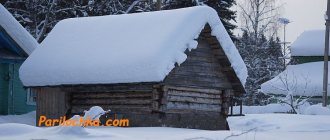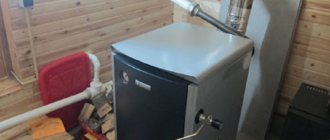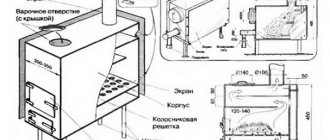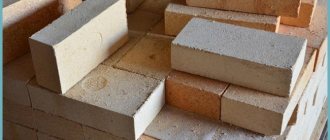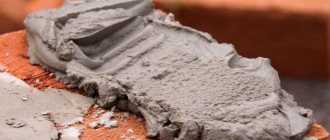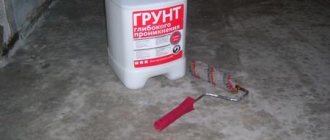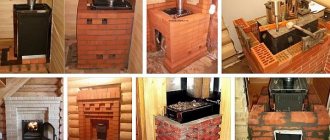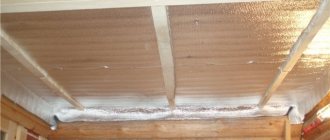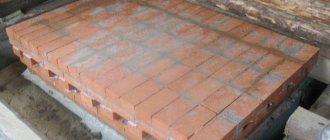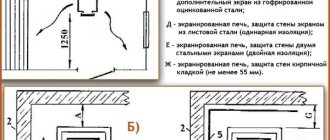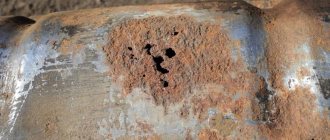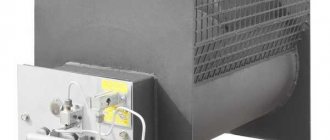When is a protective shield required?
The sauna stove regulates the temperature and steam level in the steam room. The stove also produces strong infrared radiation in the steam room. It affects fire safety in general and the conduct of bathing procedures. The area around the stove has elevated temperatures. If you do not take care of the protective screen, overheating and fire of the wooden lining of the steam room may occur.
Attention! Black, charred marks on the walls near the stove indicate a violation of fire safety rules when installing heating equipment.
In accordance with fire safety requirements, the heater must be installed at a certain distance from walls and other surfaces. Often, such requirements complicate the building design. To avoid such problems, use screens for sauna stoves. They perform two functions:
- prevent the occurrence of a fire hazard;
- speed up the heating process of the oven.
The last point is worth explaining in more detail. The main element that heats the room is steam. Thanks to the oven screen, it is possible to get it sooner than without it.
Where to put the stove in the bathhouse?
The location of the stove depends on many factors, in particular, on its type, as well as on the location of the firebox (in the same or in an adjacent room). In addition, fire safety is important - there should be at least half a meter from all fuel.
So, those who decide to install a brick oven make a foundation for it, so the location is already determined at the sketch stage. But with a metal stove, sometimes people delay until the last minute, not knowing which model to buy. Therefore, it happens that already finished walls have to be cut and other unnecessary work done.
IMPORTANT! The location of the supply ventilation depends on the location of the stove, so it’s better to think in advance. In addition to ventilation, it is worth thinking about fire safety, especially in a bathhouse with flammable walls
Often, in order to provide it, part of the wall is made of brick. Which again speaks to the need for planning.
In addition to ventilation, it is worth thinking about fire safety, especially in a bathhouse with flammable walls. Often, in order to provide it, part of the wall is made of brick. Which again speaks to the need for planning.
The location of the stove in a bathhouse with a separate steam room
There can be two options:
- or the stove, together with the firebox, is located entirely in the steam room, which means it only heats it;
- or the firebox is moved to the adjacent room, which allows for partial heating of that room too.
The location of the stove in a bathhouse with a separate steam room: option with a firebox from the rest room. Diagram from the article about the hood
In the first case, during the cold season you will have to think about how and with what to heat the neighboring rooms, in the second - the same problem remains only partially.
Stove in a bathhouse with washing and steam room
Here you can also find several solutions. The firebox can be taken not to the rest room or dressing room, but to the washing room. But this is problematic from the point of view of storing firewood. Therefore there are other options.
Stove in a bathhouse with washing and steam room
You don’t have to remove the stove at all, just install a water tank on top, which will be connected through the wall to the “samovar” on the chimney pipe in the steam room. “Samovar” is a heat exchanger (!stoves with a heat exchanger are reviewed here), which can be found on sale; with its help, water for the washing room is heated, and from the tank there is heat sufficient to maintain a normal temperature of 30-32 degrees in the washing room.
In some cases, the problem is solved by additional heat sources - a warm floor or a second stove.
Video
The following video shows an explanation of the diagram shown above:
Is a foundation always needed for a furnace?
We already said above that no, it is not always needed. The need for it arises only when the weight of the sauna stove with everything associated (from the water tank to all the bricks that line the floor, stove and chimney) exceeds 700 kg. If the total weight is lower, you can simply lay the base with bricks instead of a foundation, put 12 mm asbestos on top, and on top of it - a steel sheet of any thickness (from 1 mm). The topic is discussed in detail here.
IMPORTANT! A separate foundation for a brick oven is made so that it has its own shrinkage, not related to the shrinkage of the house. Such a foundation is made thoroughly, deepened to the load-bearing layer
If the stove weighs more than 700 kg, but not much, then you can make a shallow foundation
Such a foundation is made thoroughly, deepened to the load-bearing layer. If the stove weighs more than 700 kg, but not by much, then you can make a shallow foundation.
Usually the foundation for the furnace is not brought up to the height of the subfloor, because then the bricks are laid and the height is compared. The area of the stove foundation should be 15-20 cm larger than the area of the stove base on each side.
The video below clearly demonstrates the process of pouring a foundation for a bathhouse yourself. The video is a little dark, but it gives you an idea of the process.
Distance from stove to wall
Maintaining the recommended distances from the heater to the wall or any other flammable surface will protect the room from fires and make your vacation enjoyable and safe. Each stove model comes with instructions that contain installation recommendations, including the safe distance from the stove to the walls. In most cases, this figure is 50 cm from the surface that can catch fire.
What to do if it is impossible to follow the recommendations? In this case, the distance is reduced to 38 cm. But the surface that can ignite must be protected by a sheet of metal in combination with a layer of non-combustible material. The thickness should be at least 1 cm. Gypsum or basalt cardboard can be used as a non-flammable material.
If you need to minimize the distance to the wall even further, a brick partition is erected. The distance can be reduced to 12.5 cm. The stove is placed close to the brick screen.
Recommendations regarding the installation of brick screens
A brick screen weighs a lot, so you need to take care of a solid foundation. If the protective contour is high, up to the ceiling, reinforcement of the foundation is required.
Remember! The base of the stove and screen must be common and reliable enough to support the mass of dozens of bricks.
A reinforced concrete foundation is recommended. If the stove is miniature and the protective “casing” is not high, there are few complaints about the base.
Recommendations regarding the construction of a brick screen:
- no need to place the brick close to the stove; there should be a gap of 5-10 cm between the elements; due to the distance, air circulation is possible - this ensures faster heating and heat transfer; the absence of an indentation leads to the fact that at first (and for a long time) the screen warms up, and only after that the brick gives off some of the heat to the steam room;
- a gap of at least 5 cm is also required between the masonry and the wall; This will protect the wooden wall from excessive heating; besides, heat transfer, again, occurs faster; but it is also necessary to leave a distance between the non-combustible wall and the screen - this will allow you to do without condensation in winter, which will arise due to temperature differences;
- in the lower rows of bricks it is necessary to make gaps; sometimes they are made over the entire screen area at certain intervals; the gaps provide air circulation and allow you to regulate the rate of heat transfer; openings can be closed with doors - thanks to them, thermoregulation becomes more convenient;
- the top of the screen should be higher than the firebox, but does not have to extend to the ceiling.
Important! Ventilation holes are required. Without them, full circulation of air flows is impossible. Only their number and placement vary.
The masonry mixture is prepared from sand, clay, cement and water. The usual ratio of components is:
- clay – 1 part;
- sand – 2 parts;
- cement – 10-20% of the total volume of the previous components; M400 cement is used;
- water - at your discretion; the solution should be such that it does not crumble or spread.
The amount of cement depends on the load received by certain structural elements. For vertical partitions, 10% is enough, but, for example, arched elements will require more binder.
Typically, half-brick masonry is used with a standard checkerboard pattern. The thickness of such a screen is enough for optimal, comfortable heat transfer. If faster heating of the room is required, the brick is placed on its edge. And vice versa - if the furnace is too powerful, and capacious accumulation with a long-lasting thermal effect is required, the partitions are thickened.
Protective screen for sauna stoves
Protective screens are installed to protect the room from fire. They must have increased heat resistance and, if possible, low thermal conductivity. The most popular materials for creating a protective screen are:
- brick (red brick, clinker);
- steel sheets.
When installing the stove, do not forget to protect the floor and ceiling. When installing a chimney, in addition to the duct, a metal sheet is attached. The floor is protected in different ways:
- install brickwork;
- install a protective screen for the floor;
- lay a heat-resistant metal sheet under the heater.
When purchasing a ready-made protective screen in a store, you should pay attention not only to the size, but also to the model of the oven for which it was made. They differ in size, thickness, and level of temperature that they can withstand. Some models have a non-standard shape.
Stainless steel screen
One way to protect the steam room is to use a stainless steel metal screen for the sauna stove. The screen consists of hollow metal parts (boxes). The top is covered with stainless steel sheets or painted with heat-resistant paint. The screen is attached to the wall. Due to the presence of hollow parts, an air gap remains inside the structure. It's heating up. Holes at the bottom of the structure ensure constant air circulation, preventing overheating. This way the temperature drops significantly. A wooden wall cannot spontaneously ignite.
Another possibility of a stainless steel protective screen is the reflection of some of the heat. It returns back to the steam room. This feature allows you to maintain the desired temperature in the steam room longer. The metal does not overheat.
Brick screen for sauna stove
Metal and cast iron heaters emit hard infrared radiation during operation. This affects the creation of a microclimate in the bathhouse and increases the risk of injury (burn). To avoid troubles, a brick fence is erected around the stove at a distance of 15–20 cm. It will avoid injuries and soften the microclimate in the steam room. In the case where the stove-heater was built independently, the partition will also perform a decorative function - it will hide all the errors of self-installation and decorate the interior of the steam room.
A brick screen for a bath allows you to install the stove in close proximity to the wall. Most often, solid fireclay bricks are used for the screen. The masonry is carried out on a mortar of clay and cement base. A heat-resistant adhesive for such work has appeared on the market. The most popular brands are “Hercules” and “Terracotta”. Experienced masons consider these types to be optimal in terms of price and quality. The masonry is done using half a brick. This is enough to protect the wall. The thickness of the protective screen will be 12 cm.
When the heater firebox is moved into an adjacent room, it makes sense to additionally protect this section of the wall. A beautiful brick will not spoil the interior in any way and will make visiting the bathhouse safe.
Instead of traditional brick, you can use clinker, terracotta tiles, natural or artificial stone. These materials perform not only a protective function, but also a decorative one. The interior looks more attractive.
Important! Such fashionable materials as heat-resistant glass panels and salt slabs are not suitable for creating protective screens and partitions.
Wooden sauna stove fencing
A fence for a stove in a steam room is a mandatory element when using a metal or cast iron heater without protective brickwork. The main task of the fence is to prevent burns and injuries during the procedure. The optimal material for such a structure is wood. This natural material has low thermal conductivity and does not heat up. Touching such a fence will not leave any unpleasant sensations.
The distance from the stove at which the fence is installed must be at least 50 cm. Fire safety recommendations are always specified in the instructions for the device. If after some time darkening appears on the tree, the fence should be moved away from the heater.
Important! Metal cannot be used for fencing. It heats up quickly and leaves burns when touched.
The design of the fence may be different depending on who is visiting the steam room. If the bath attendants include children, then experts recommend designing the fence in the form of a fence. The distance between the picket fence should be minimal so that the child does not have the opportunity to stick his hand into the gap.
When the bathhouse is visited exclusively by adults, you can limit yourself to a simpler design: a pair of horizontal jumpers in combination with a vertical column.
The design of the fence can be different, depending on imagination and personal preferences.
Protective non-combustible sheathing
Protective non-combustible cladding will help protect the walls, floor and ceiling of the bathhouse from high temperatures. They come in two types:
- reflective screens;
- facing materials.
The choice of cladding will depend on design, budget, layout and personal preference. Reflective screens, as a rule, are cheaper than facing materials. The latter looks much more impressive than its budget counterparts. The installation of the coating will also differ. This must be taken into account when choosing material.
Reflective screen for baths
The heat-reflecting screen for the furnace is made of stainless steel. The sheet is attached on top of a layer of non-flammable heat-insulating material. Its thickness must be at least 1 cm. Heat rays are reflected from the metal surface and partially return to the room. A heat shield for the oven softens the rays. A person can tolerate high temperatures much easier.
The following are used as thermal insulation materials:
- Basalt wool. The material has high thermal insulation properties. The material is absolutely safe and suitable for use in a steam room.
- Asbestos cardboard. Fireproof insulator is sold in sheets. Strong and durable material, used to protect surfaces from fire.
- Minerite slabs. Used in baths and saunas. They protect surfaces well from fire. Suitable for the construction of fire-resistant partitions.
These are the most popular materials used when installing a stainless steel protective screen.
Important! Galvanized steel sheets are available for sale. Some sellers recommend using them to mount a protective screen. This cannot be done. When heated, the material may release toxic substances. It is not suitable for a steam room.
Cladding with cladding
A stainless steel bath screen is considered a budget option. Those who prefer sophisticated solutions even in small details should pay attention to the cladding of vulnerable surfaces. For cladding the following are used:
- heat-resistant tiles “Terracotta”;
- clinker tiles;
- tiles.
Terracotta tiles are designed specifically for cladding fireplaces and stoves. It is distinguished by strength and durability. It is made from white fireclay clay. The material can withstand high temperatures. Does not crack under their influence. These tiles can be purchased in light brown, red-brown, fiery, and black shades.
Clinker, unlike terracotta tiles, has a more dense structure. During production, the tiles are fired at temperatures up to 1450 degrees. This gives the material special strength. Clinker can withstand both high and low temperatures. Available in different colors.
Tiled tiles are perhaps the most beautiful facing material used for baths. The stove screen can be made in various colors, and you can even create an artistic composition. Glazed tiles are ceramic plates coated with glaze. The material also copes well with protective tasks, but is more expensive. This is due to the unusual design.
For installation of tiles, heat-resistant adhesives are used. They will provide high-quality adhesion to the surface and long service life of the screen.
Types of brick partitions
One way or another, any brick heat shield acts as a barrier between the heat source and its surroundings. But the purpose of protection is somewhat variable. Depending on the specific task, barriers can be divided into 3 categories:
- fire screens; they are erected between the furnace and walls made of flammable materials; such structures protect walls from fire; the distance between elements is regulated by relevant standards;
- screening partitions; their goal is to protect people from heat flow and infrared radiation;
- decorative elements; in addition to their main purpose, such structures serve as independent interior elements; in such cases, they are not limited to primitive masonry - partitions are made in an aesthetic, and often exclusive, design.
Sometimes the distinction between categories is blurred. If the heat source is made using a homemade method, then most often even ordinary masonry will artistically enhance the interior. As for fire screening, it is necessary for any wooden (or wooden-clad) bathhouse. Yes, according to standards, flammable walls from a stove in a bathhouse can be protected with a metal sheet. But in decorative terms, the latter is very far from brick design.
Floor screen for oven
Stands, platforms made of brick or screens made of stainless steel or cast iron can be used as floor protection. Metal models can be purchased at any specialty store. As mentioned at the beginning of the article, when purchasing floor protection, you should pay attention to the model for which the screen was created. Before purchasing, you should consult a specialist.
Attention should be paid to the screen size. It is selected based on the size of the room and the stove. A prerequisite is the distance between the screen and the wall. It is stated in the technical documentation for each model.
Brick protection is considered more reliable. Its installation is planned in advance, at the bathhouse design stage. The opportunity to build masonry after the construction of the bathhouse still remains. But this requires large labor and material costs.
What types of stoves can be used in a sauna?
Today, the choice of steamer is extremely diverse: you can buy a stove and make it yourself, or buy it and modify it, but there are a lot of options. Let's reduce them to several main types. Ovens are:
- brick;
- metal (including with brick lining);
- electric.
Brick kilns
Traditional stoves for the Russian “white” bath are brick. They have a number of advantages, since there is a direct connection between such a stove and the requirements of a Russian bath.
In particular, a brick oven provides uniform heating, and most importantly, light steam, that is, formed at a high temperature, from which the steamer does not have breathing problems, as from heavy low-temperature steam.
But a brick oven also has its drawbacks. Built entirely of brick, it will be heavy, expensive and will require some skill in maintenance (! inexpensive stove options are presented in a separate article). You need to decide at the design stage, because there will be costs for a separate foundation for it.
Heaters in brick kilns come in all types:
- flow-through, where stones are washed by fire;
- blind, where the stone is separated by a solid sheet of metal from the fire;
- open - with stones on the surface;
- closed - with a door covering the heater compartment;
- bell-type - a type of closed blind with more efficient heating.
Metal furnaces
A very common option because it is more budget-friendly compared to a solid brick stove. The material used is either cast iron or steel - both of different grades.
IMPORTANT! A metal stove without a surround will overheat the room. This is good for a sauna, but not for a Russian bath.
The fact is that metal heats up quickly, and stones heat up slowly. And always during heating, most of the heat is released into the room. Bare metal will give off too much heat to the room, which should not heat above 40-60 degrees. And the stone must heat up to 400 degrees to produce light steam. This creates a big contradiction: in order to heat the stone to produce good steam, you will have to greatly overheat the bathhouse.
The solution to this problem is usually to install a brick lining around a metal stove. This redistributes the heat released during combustion, the brick accumulates it and releases it more softly and for a long time than metal.
On the other hand, they are suitable for saunas, where the air temperature is higher and the steam is much less.
The disadvantages of this type of stoves include the fact that they not only heat up quickly, but also cool down quickly. Therefore, the bath procedure has to be interrupted in order to heat the stove again.
The cost of a metal stove will be lower than a brick one also because it does not require such a solid foundation. A foundation is sometimes necessary, but it can be shallow, and in some cases they are generally limited to a layer of refractories under the stove and that’s it.
There are a lot of varieties of metal stoves - both homemade and factory-made. One of them is worth mentioning separately.
Electric heaters
Electric stoves were originally created for saunas. But then models appeared that are capable of working in Russian bath mode. Those who decide to opt for an electric stove should find out whether the selected model has one or two modes. However, there is a simple criterion:
IMPORTANT! Models with a load of stones of 20-40 kilograms are intended exclusively for saunas; you simply cannot pour a lot of water on them. Models for Russian baths begin with a load of stones of 60 kilograms. Electric heaters are usually bought by those who expect to get quick results with a minimum of effort
There is no need to cook firewood or wait for the stove to heat up (! The corresponding section is dedicated to wood stoves). It all comes down solely to electricity costs (well, electric heaters themselves cost a lot). The second advantage of these stoves is that they are quite compact, and up to a certain weight they can also be mounted on the wall, freeing up space in the steam room. Floor models allow free rearrangement - they are not connected to chimneys and foundations
Electric heaters are usually bought by those who expect to get quick results with a minimum of effort. There is no need to cook firewood or wait for the stove to heat up (! The corresponding section is dedicated to wood stoves). It all comes down solely to electricity costs (well, electric heaters themselves cost a lot). The second advantage of these stoves is that they are quite compact, and up to a certain weight they can also be mounted on the wall, freeing up space in the steam room. Floor models allow free rearrangement - they are not connected to chimneys and foundations.
